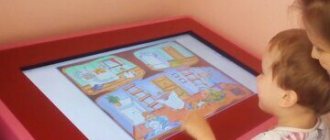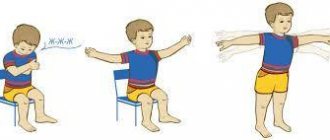The child went to school and had problems with learning, difficulties in the team and with the teacher. The child makes simple mistakes in ordinary words, cannot write them correctly and beautifully, and does not remember information well. The child developed headaches. What's wrong with the child? What happened to the baby? After all, before school there were no special problems. Perhaps the child has school maladjustment!
School maladjustment (SD) is a violation of a schoolchild’s adaptation to learning conditions, a decrease in the possibility of learning at school in accordance with natural abilities and adequate interaction of the child with teachers, the curriculum, the staff and other components of the school. Many scientists agree that this is a complex multifactorial process, including neurological and socio-psychological aspects.
What causes dyslexia
Dyslexia is a partial impairment of the reading process caused by various reasons, including immaturity or impairment of higher mental functions.
The following reading characteristics in a child indicate dyslexia:
- phonemic problems associated with difficulties in recognizing phonemes, even in strong positions the child reads the word incorrectly (“Shenya” instead of “Zhenya”),
- analytical-synthetic problems , when a child allows distortions in the sound-syllable structure of a word (“nile” instead of “ruler”) or does not master the principles of syllable fusion (cannot read a word of several syllables at all).
- optical problems , which manifest themselves in difficulties in assimilating images of letters, their elements and in general with
- optical-spatial disorders and features of visual gnosis (the child does not orientate himself on the sheet, does not see the rulers).
- mnestic disorders , which manifest themselves in the inability to remember letters,
- agrammatical problems are typical for those children who have already mastered the skill of reading, but make mistakes during “fluent” reading. Or this is one of the signs of “guessing” reading, when a child reads the beginning of a word and then “substitutes” the wrong ending.
In semantic dyslexia, different mechanisms of impairment are observed:
- the wrong type of learning to read is letter-by-letter reading “book-staging” (when a child, instead of a word, reads a list of individual letters: B, A, B, A),
- poor vocabulary,
- poor level of mastery of grammar (the child knows “pencil” and “ruler” separately, but after reading the task “show the ruler with a pencil”, he cannot complete it).
Dyslexia is often mixed, when a child has different types of reading impairments. This happens if a child had severe speech impairments before school, or was silent for a long time, or these are combined disorders in the structure of other defects (with cerebral palsy, various syndromes).
If the child is physiologically and mentally healthy, studies according to the general education program, the school speech therapist deals with the problem.
If dyslexia is associated with problems of the child’s physical and mental health, then it is necessary to involve other specialists in the work - a child neurologist, psychologist, neuropsychologist, massage therapist.
Dyslexia: a disease or a normal variant?
The child has difficulty reading, the letters seem to dance before his eyes and change places, as if mocking the unfortunate person.
Often in such a situation, a loving parent will rashly kick and punch the poor child, saying that he is lazy, such an infection. And the father or mother, full of righteous anger, does not realize that the son or daughter did not even think of being lazy and would give a lot themselves if only all the letters would fall into place. It's all about a mysterious and little-studied diagnosis - “dyslexia”. Almost a quarter of the Hollywood Olympus suffers from it, but the strange disease does not prevent the stars from being talented and successful. How to recognize dyslexia in your child and can it be cured? The issue was discussed with psychologist Marina Alexandrova. — When and to whom is the diagnosis of dyslexia made?
“Very often parents come to an appointment with a speech therapist and say: “My child is already six years old, but he still cannot remember letters and does not read syllables well. Perhaps he has dyslexia?
Dyslexia is a partial specific disorder of the reading process. It manifests itself in difficulties in identifying, recognizing letters, merging letters into syllables and syllables into words, which leads to incorrect reproduction of the sound form of a word.
Dyslexia is characterized by a lack of reading comprehension. The child cannot read a word correctly, associate a letter with a sound, and does not understand the text that he has read. Parents do not need to rush to conclusions: At the age of five or six, many children write mirror images and confuse letters. And no matter how adults try to force things, until the age of six, a child has every right not to be able to read. In order for him to read without errors, certain brain structures must mature. This occurs at a certain age - usually closer to seven years.
A child just learning to read has the right to make mistakes. He may confuse letters and not remember what he reads until his brain and nervous system mature. We place the same demands on the speech of a 3-year-old child as we do on the speech of a 5-year-old child.
- Then how long should you wait and when is it time to sound the alarm?
— If the child has no other disorders (phonemic hearing is in order, he clearly pronounces sounds, his speech is developed in accordance with his age), experts advise not to make hasty conclusions until the end of the first half of the year in first grade. The educational program of most schools assumes that by this time the child should know almost all the letters and have basic reading skills, even if in September he did not yet know the letters and could not read and write.
And, please note, only by the end of the first year of schooling should a child read and write, know all the letters and understand what he read.
If your baby has problems with speech development or phonemic hearing, don’t hesitate to start getting rid of them. Delay is fraught with violations of written speech.
It is also worth paying attention to the preschooler’s ability to navigate the space around him. The risk of developing dyslexia is quite high if a 5-6-year-old child does not understand well where the right side is and where the left side is, does not remember the road well, has problems with visual memory, with concentration and managing his attention.
— Who should I go to if I suspect dyslexia?
— If a child cannot master reading, it is necessary to consult a speech therapist. Don't ignore this advice. The speech therapist will ask the mother in detail about the child’s developmental characteristics in order to understand what other difficulties, besides reading, he may experience. To make a correct diagnosis, many factors must be taken into account.
Next, if dyslexia is suspected, the speech therapist will recommend consulting a neurologist and neuropsychologist. If the neurologist does not find serious neurological disorders, a speech therapist will work with the child.
Dyslexia (as well as the accompanying dysgraphia) has nothing to do with a person’s mental abilities. This inability to master writing and reading skills occurs specifically in people with full intelligence, hearing and vision. This is clearly seen in the example of people who have achieved high success in creativity, business and life.
A child diagnosed with dyslexia should be treated in parallel by two specialists, a speech therapist and a neuropsychologist. The course of correctional classes can vary greatly in time. Homework is also given. The neuropsychologist is faced with the task of ensuring that the child can independently carry out complex instructions. The speech therapist needs to connect sound and letter, teach the child to combine letters into words and divide the word into separate letters and sounds. So, in classes with a speech therapist, the child will practice writing letters and learn to pronounce sounds correctly and distinguish them from one another. A lot of time will be devoted to merging letters into syllables. The problem is considered solved when the child “catches up” with the age norm. He learned the alphabet, reads, understands what he read, and learned to write.
— Please give advice to parents of a child with dyslexia.
— It is useful for dyslexics to play hopscotch, perform turns on command and make plans. Are you going to the store? Ask your child to talk and then draw a movement pattern on paper. Making plans for today or tomorrow helps to form a child’s idea of the sequence of actions so that he understands what happened first and what came next. In the evening, ask him to remember what he consistently did during the day, what was accomplished and what was not, how he completed the tasks, outline and discuss a plan of action for the next day. While the student is overcoming difficulties, talk to the teacher, explain the problem to him and ask, if possible, to additionally pronounce the tasks orally, offer diagrams to the child with dyslexia, make learning more visual and rely less on text.
It is possible to overcome dyslexia. But for this you need to make great efforts and collaborate with a teacher, speech therapist, and neuropsychologist. Only through joint efforts can we achieve good results and prevent the return of this disorder in adolescence, when the student will have to work with large texts.
Dyslexia is called word blindness. And also a disease of geniuses, since most dyslexics are creatively developed people. We will tell you about seven celebrities who, despite all the difficulties, illness did not prevent them from achieving recognition and success in life.
— Jennifer Aniston
is one of the most successful Hollywood stars, whose films are adored by millions of fans. But in her youth, Jennifer considered herself stupid because of her learning difficulties. Dyslexia was discovered at an ophthalmologist's appointment when the actress could not read the text or answer questions.
Steven Spielberg's childhood
considered lazy and not very smart. At school, the boy learned to read two years later than his peers. Spielberg recalls being teased and humiliated by his classmates at school.
— Whoopi Goldberg
no education, but has dyslexia, which prevented her from finishing school. She recalls being called "dumb" and "slow" because she had trouble reading.
— Tom Cruise
Diagnosed with dyslexia at age seven. He changed 15 schools in 14 years, trying to find a common language with teachers and classmates. Eventually, Tom dropped out of school.
— Keanu Reeves
With the help of doctors and speech therapists, I learned to read normally only in high school. But he failed all the final exams and was left without a higher education diploma.
— Cher
Since childhood he has suffered from an advanced case of dyslexia. She could not learn not only numbers, but also letters. The biggest problem she had was recognizing the numbers 6 and 9. This is now called dyscalculia.
— British and American actor, composer, winner of an Oscar and two Emmy awards and three BAFTA Anthony Hopkins
As a child, I was not known as a smart child. He himself had a low opinion of himself. He had to change several schools before he realized that he was not like everyone else. It's hard to believe now, but Hopkins learned to memorize huge texts in a very short time.
*This is not a complete list of people with dyslexia. Among the famous dyslexics were Albert Einstein, Leonardo da Vinci, Hans Christian Andersen, Agatha Christie, Peter the Great and many others.
Interviewed by Zoya Stepanova
How can you tell if your child will have reading problems?
Every problem has roots. Let's look at various ways to diagnose problems that can later lead to the development of dyslexia:
- If a child has speech disorders, he goes to a speech therapist. The speech therapist also looks at whether the child has disorders of phonemic hearing, analysis and synthesis, understanding, whether the dictionary is impaired and whether there are agrammatisms (incorrect formation of words and their forms), how well coherent speech is developed. It is in classes that develop speech that the speech therapist also carries out the prevention of reading disorders, especially those types that are associated specifically with speech.
- During art classes and when using any types of manual labor, a good teacher will notice that the child has poorly developed fine motor skills (cannot cut, sculpt, glue, lace, or fasten buttons). For writing and calligraphy, it is very important to be able to perform small, precise actions. They are specially trained. I recommend these exercises every day.
- If a child goes to school, he must be able to ride a two-wheeled bicycle - the functions of writing and reading require coordination and coherence.
- Poor control of rhythm can complicate the learning of words with complex syllabic structures, which means it needs to be developed - dancing, music or more specialized procedures, such as an interactive metronome, will help.
- Reading requires well-formed visual-motor and auditory-motor coordination in order to be able to see, hear, and speak at the same time - this is what is important when reading.
- The child must be able to remember and, if necessary, retell what he has read.
- It is necessary to understand which hand the child has - the leading one, with which hand he will write.
Speech therapists, psychologists, neurophysiologists and neuropsychologists often pay attention not only to the leading hand, but also to the leg and eye. Lateralization is important because in the Russian language there are letters that face right or left, are symmetrical vertically and horizontally, or are completely asymmetrical, and a left-handed child may have difficulty learning directions.
In fact, the vast majority of left-handed people and ambidextrous people (people who can use both hands equally) do not have any special features other than their dominant hand. The left-hemispheric location of the speech center is observed in 95% of right-handed people and 70% of left-handed people. And only 15% of left-handed people have a speech center in the right hemisphere. Such children have peculiarities of thinking - they think in images. They may have the ability to draw, play music, or, on the contrary, they may have a number of neurological problems.
Factors that aggravate the situation with dyslexia:
1. Weak language skills and speech problems : late (less often early) onset of one’s own speech; characterized by bright turns of speech; deficiencies in phonetics; difficulty expressing thoughts in words; stuttering.
2. Problems with mastering writing skills : difficulties in writing words; reversal (mirror writing) of letters and numbers; a large number of errors when copying and writing from dictation; bad handwriting; there are many corrections in written works; combined with dysgraphia and dysorthography.
3. Weak math skills: learning difficulties; difficulty estimating time; may be able to perform arithmetic operations, but not the ability to write or read them; problems with algebra or higher mathematics, but may also be successful in the subject; poor memory for sequences.
4. Psychological difficulties and problems : low academic performance; insufficient formation of visual memory; low speed of completing tasks and inability to meet the deadline allocated for completing the task; emotional instability – excessive emotionality or irritability; difficulty concentrating, including on one activity; problematic switching between different types of activities; loss of interest, lack of self-confidence; high level of anxiety and fear of mistakes, can be assessed as a lazy student; Doesn't do well on tests despite having a high IQ.
5. Motor and psychomotor difficulties : may have poor handwriting; disorders of spatial orientation, visual-motor coordination, clumsiness, clumsiness, disturbances of interhemispheric interaction; impaired coordination of movements and the associated assimilation of knowledge - a violation of the assimilation of the body diagram, confuses “right” - “left” and “above” - “under”; lags behind in team sports, has difficulty with motor-oriented tasks, learns best through hands-on experience.
6. Neurological problems : often dizziness, headache, stomach pain; behavior may be erratic or disruptive; urinary incontinence even beyond the appropriate age; a sharp increase in difficulties under time pressure and stress.
7. Vision problems: complaints of vision problems that are not detected during standard examinations; there may be a disturbance in depth perception; defects in peripheral vision.
The listed factors can be combined or isolated, characteristic only of dyslexia.
Sometimes it seems that skills are “mood dependent” and change from day to day. A child with dyslexia can easily read and write a word today, and just as easily fail to do so tomorrow.
Also, children with dyslexia are characterized by variability in errors: the same word can be read both correctly and incorrectly, and the erroneous reading looks different with each attempt: “dig - dig - roll - guess.”
Tips for parents
Of course, dyslexia requires increased attention not only from specialists, but also from parents. Help your child.
Before you start your homework on correcting the now fashionable disease, remember some rules.
- Calmness and patience. Even when your nerves are at their limit. Remember that dyslexia is not a sign of laziness, it is truly a disorder, a health problem.
- You cannot punish a sluggishly reading child for mistakes when reading.
- Praise. Highlight achievements. The situation of success is inspiring.
- Do not share your feelings about this with other people in front of your child, this can seriously hurt him.
- Dyslexia can manifest itself in different ways. Let's not go deeper, there are specialists for this.
When starting classes, remember that they should not be done occasionally, but regularly. To prevent your baby from getting bored with daily exercises, try to organize them in a fun way and do not overload the growing body.
Symptoms
Depending on the type of disorder, the symptoms of dyslexia can vary greatly. But there are several common features that will help to detect and eliminate this disorder in time.
- Frequently rubbing the eyes, reading from an unusual angle.
- Bringing a book closer to your eyes when reading. At the same time, vision can be excellent and in other cases (playing with objects in hands, looking into the distance) deviations do not appear.
- Reading with one eye or alternately closing eyes.
- Frequent fatigue, reluctance to complete reading-related tasks. At school, this could be homework, reading additional literature.
- Omission of sounds, words, phrases when reading, breaks in voicing the text.
- Complaints of headache and fatigue that only occur while reading.
- Errors associated with understanding the text, absent-mindedness, inattention, inability to retell what was read or say what the text was about, lack of understanding of its individual sections.
Associated problems with handwriting, learning to write, spelling words with unusual errors.
Reading impairment: exercises to correct dyslexia
We offer you tasks that will benefit all children with dyslexia. The exercises are aimed at developing visual attention, perception and memory, enriching vocabulary and improving reading skills.
Making a word from initial letters
Place pictures in front of your child, the initial letters of which together form a word. You can use toys or any other items. Try offering the opposite option: the baby will “bewitch” the word in the same way, and you will read it.
The words are lost
“There are words hidden in the room that begin with the sound R. Let’s look for them.” Next, complicate the task and ask them to find objects that end with a certain sound.
Letter from memory
The child must read the word and remember it, and then write it. Happened? We complicate the task and offer a phrase and a sentence.
Fix the word
Invite your child to make a word from a set of syllables. At the very beginning of learning, if difficulties arise, show a hint picture.
Velcro words
“The words are stuck to each other. They need to be helped to separate.”
MOMDAPAGRANDMOTHERGRANDFATHERWORDPICTURE
Subsequently, complicate the task and offer to divide the sentence into words.
I'M GOING FOR A WALK. I BOUGHT A BEAUTIFUL DOLL. ITS NATASHA.
Word game
We all played "city games". The principle of playing with a child is similar, only define the theme more simply. Or even without it at all. Just come up with a chain of words together that end with the last sound of the previous one. For example: mother - album - chalk - moon - aquarium.
Diagnostics
Diagnosis of dyslexia may include tasks such as:
- find the right letter;
- come up with as many words as possible starting with a certain sound;
- highlight all vowels or consonants in a given word;
- compare the sound composition of words that differ in one sound (kot-kit, mak-rak);
- count the number of letters in a word or words in a sentence;
- make up a short story based on a series of pictures.
Such a comprehensive examination allows you to find out the level of speech development of the child, understand what his main difficulties are, and draw up an individual plan for correctional classes. It is necessary to establish exactly what form of dyslexia the student has; exercises and their complexity will depend on this.
Additional exercises
In order for the learning process to go faster, it is important to further develop the speech, memory, attention and thinking of a preschooler (or primary school student). To do this, you can use the following exercise games:
- When going to the store, make a shopping list with your son (daughter), draw on paper a diagram of the movement along the street and the store. On the way (if you are walking) ask - where should you go? Ask to show the way, indicate landmarks.
- It is very useful to play regular hopscotch or “soldiers” with your child so that he will make turns on command - to the right, to the left.
- Hide a toy (or other thing) in your apartment and draw a diagram where you can find it. Ask your child to do this.
- Select 7-10 toys and place them in a row. Then invite the child to enter the room, let him look at the toys for 5 seconds, ask him to turn away. Hide one toy, ask to determine which one was hidden.
- Place 5-10 small toys (or objects with a pronounced texture) into a bag. Let the child study them first, and then, putting the pen into the bag, determine by touch what exactly is in his hand.
- In the evening, while communicating, ask you to remember sequentially what the baby did in the morning, afternoon, and evening. What worked for him, what didn’t. Discuss the plan for the next day.









